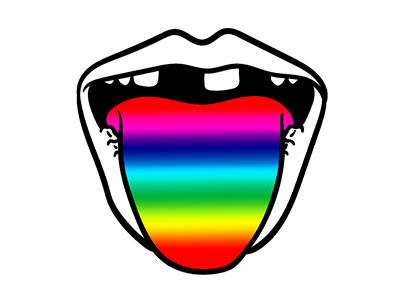
English is a colorful tongue, but the spoken language uses a fairly limited palette of sounds. Of the 107 unique vocal sounds (or “phonemes”) that the International Phonetic Association identifies as the building blocks of speech, standard spoken English uses only forty-four. That’s not many, all things considered.

English speakers don’t have to contend with some of the more exotic (to English speakers, anyway) sounds produced by the human palate, such as the guttural Germanic R, the nasalized vowels of Mandarin Chinese, or the click consonants of southern Africa’s Khoisan languages, but those forty-four phonemes can be arranged in tens of trillions of combinations (4444).
Get a free sample proofread and edit for your English document.
Two professional proofreaders will proofread and edit your English document.
With this effectively infinite number of potential spoken words, English could have been a precise and unambiguous language, assigning a unique-sounding word to each distinct concept, but that’s just not how languages evolve. The development of human speech has been driven more by vibes than by logic. We favor the sounds that feel good in our mouths and fall pleasingly on our ears.
The standard for beauty varies across different cultures, but speakers around the world gravitate toward certain favorite combinations of phonemes. This is particularly true of English, which borrows willy-nilly from a high number of different sources to concoct a vocabulary full of similar-sounding words that are entirely unrelated, like “palette” and “palate” in the paragraph above.
It’s understandable that people mix up these two words. (There’s a third homophone that’s an outlier, but we’ll get to that later.) Both “palate” and “palette” are words with concrete, fairly technical meanings that have come to be applied figuratively to sensory experiences, particularly to the field of aesthetics and questions of taste, both culinary and artistic. In looking at these words, we’ll start with the literal meanings and get progressively more abstract.
Watch Your Mouth
Of course, part of the problem is that even the literal meaning is slightly different depending on who’s talking. To a doctor or anatomist, the “palate” (from the Latin palatum) is the roof of the mouth, encompassing both the hard palate (the bony plate nearer the teeth that separates the oral cavity from the nasal cavity) and the soft palate, which is the fleshy part at the back of the throat with the tonsils and the uvula. But to a speech therapist or linguist, the palate is the area behind your top front teeth.
Ex: When pronouncing the letter T, the tip of the tongue taps against the palate.
In general conversation, “palate” has, by the process of metonymy, come to refer to the mouth generally and its uses, and especially to the sense of taste, even though in literal terms the palate has nothing to do with taste, which resides in the buds of the tongue and in the olfactory receptors of the nose.
Ex: For you to be a professional wine-taster, one must have a finely developed palate.
Ex: Too much salt made my meal unpalatable.
Colorful Language
“Palette” also begins with a specific and technical meaning, as a piece of specialized equipment, specifically, the flat board of thin wood or plastic on which a painter blends the blobs of raw color from their paint tubes to create the subtler shades needed for fine art.
Ex: Acrylic paint dries quickly, so keep a spray bottle of water near your palette while mixing colors.
From this literal use, the meaning grew to encompass the color scheme for a particular work.
Ex: Picasso’s masterpiece “Guernica” uses a muted palette of grays and browns.
And from there, more abstractly, to the range of artistic options from which an artist in any medium may choose, and which make the artistic experience distinctive.
Ex: The instruments of the symphony orchestra present a wide palette of sounds.
Or, to bring it back home:
Ex: Using a palette of only five basic flavors—sweet, sour, salty, bitter, and umami—a skilled chef can craft a dish to please any palate.
Odd Man Out
To mix things up, there’s “pallet,” which these days usually means a movable platform on which goods are stacked for shipping or warehousing, usually made from slats nailed across a low, boxlike frame.
Ex: Gina ran a forklift eight hours a day, stacking pallets of beer kegs.
“Pallet” actually derives from the same Middle French word as “palette” (pale, meaning “spade or small shovel”). The two have different spellings to go with their different meanings because they were borrowed into English on separate occasions. Pallet entered the language in the fifteenth century as the name of a particular flat-bladed wooden tool (making it cognate with the “peel” used to load dough into a pizza oven, and possibly also with “paddle”), whereas the painter’s board came in about 200 years later.
And just to add to the confusion, there’s yet another meaning for “pallet”: a crude mattress stuffed with straw. This one’s pretty obscure, and mostly obsolete; you might find it mentioned as sleeping accommodations in a historical romance or fantasy novel set in Ye Olden Times. In any case, it is entirely unrelated to either “palette” or the platform sense of “pallet,” being far older than either and derived from a different root word, paille, meaning “straw.”
And with that final straw, it’s time to put this blog to bed and ship it out. See you next month!
Jack F.
Get a free sample proofread and edit for your English document.
Two professional proofreaders will proofread and edit your English document.
Get a free sample proofread and edit for your document.
Two professional proofreaders will proofread and edit your document.
We will get your free sample back in three to six hours!